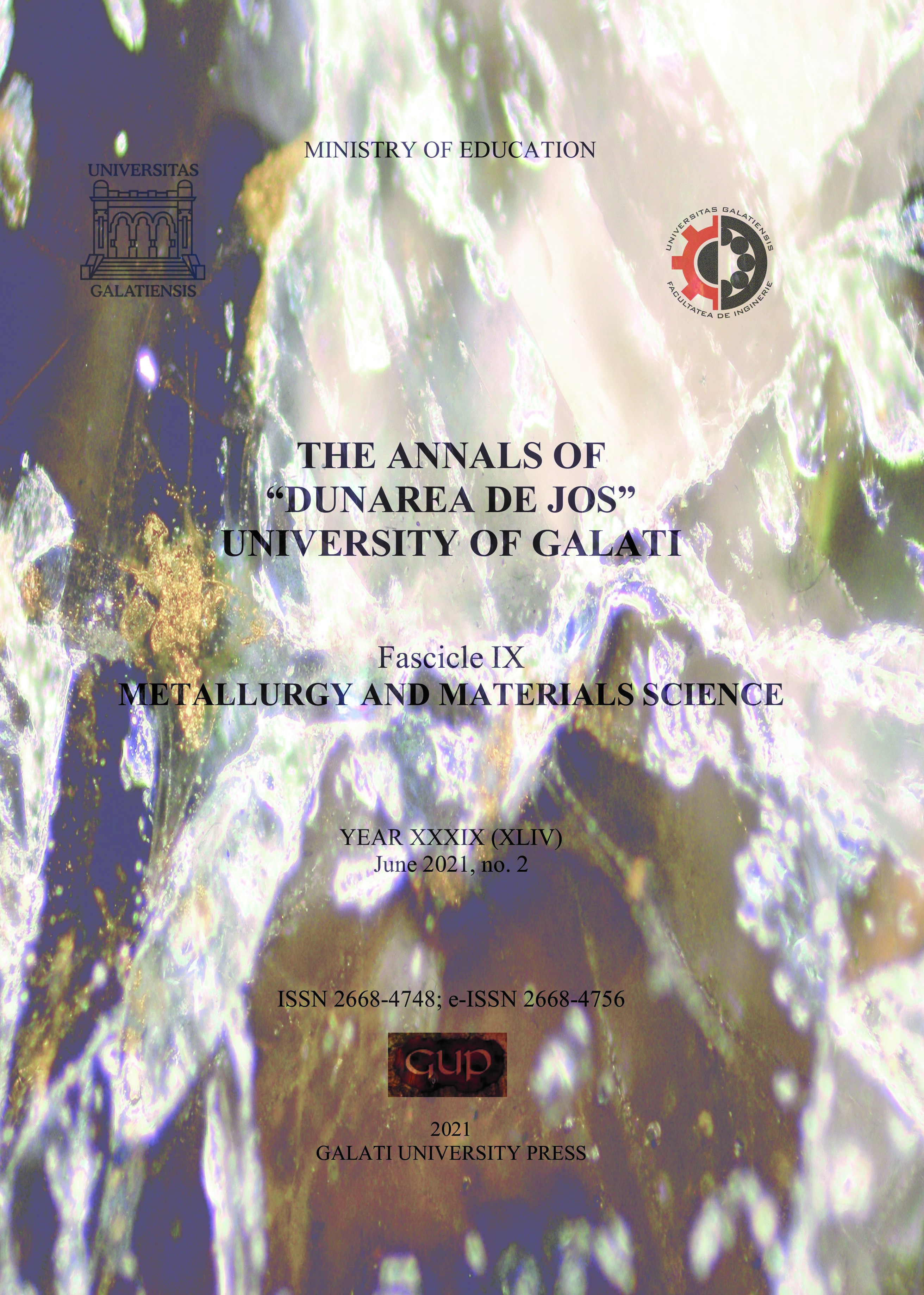Assessment of PM2.5 and PM10 Emissions in the Metallurgical Industry from Romania
Abstract
The article focuses on the evaluation of PM2.5 and PM10, pollutants resulting from the metallurgical industry in Romania. The analysed period is 2008-2018 and the dataset was provided by the National Institute of Statistics. The purpose of this paper is to examine the impact of final energy consumption in the metallurgical industry on PM10 and PM2.5 emissions. We included in the study three fundamental factors: the final energy consumption in the metallurgical industry and the particulate matter (PM10 and PM2.5). The average of PM10 for reference period is 4026 Tone (Mg) while for the PM2.5 the average is 3645 Tone (Mg). The trend of final energy consumption in the metallurgical industry is identical to the trend of PM2.5 and PM10, which indicates that this factor has a major influence on the amount of PM2.5 and PM10 emissions. PM2.5 and PM10 emission factors represent primary emissions from the metallurgical industry activities and do not consider the formation of secondary aerosol from chemical reaction in the environment afterwards the discharge.
Downloads
References
[2]. EEA, Report No 9/2020 ISBN 978-92-9480-292-7, ISSN 1977-8449, doi:10.2800/786656, 2020.
[3]. Maxim A., et al., European Journal of Sustainable Development, 6(1), p. 247-260, doi.org/10.14207/ejsd.2017.v6n1p247, 2017.
[4]. Sehic-Music N., Goletic S., Pihura D., Music L., Hasanovic K., Metalurgija 52, 4, p. 533-536, 2013.
[5]. ***, Report on the energy poverty and air quality status in the eastern European countries, InventAir project, Energy Agency of Plovdiv, https://www.inventair-project.eu/images/IA-Status-report.pdf, 2018.
[6]. ***, IPCC Guidelines for National Greenhouse Gas Inventories, Prepared by the National Greenhouse Gas Inventories Programme, Eggleston H. S., Buendia L., Miwa K., Ngara T., Tanabe K. (eds). I GES, Japan, 2006.
[7]. ***, EEA Report No 13/2019, https://www.eea.europa.eu/publications/emep-eea-guidebook-2019.
[8]. ***, Iron and steel production EMEP/EEA air pollutant emission inventory guidebook, 2019.
[9]. Habashi F., Journal of Mining and Environment, 2(1), 17-26. doi: 10.22044/jme.2012.16, 2012.
[10]. Visschedijk A. J. H., Pacyna J., Pulles T., Zandveld P., Denier van der Gon H., Proceedings of the PM emission inventories scientific workshop, Lago Maggiore, Italy, 18 October 2004. EUR 21302 EN, JRC, p. 163-174, 2004.
[11]. ***, Best Available Techniques (BAT) Reference Document for Iron and Steel Production, European Commission, Available at: http://eippcb.jrc.es, March 2012.
[12]. ***, Manual for air emissions accounts, Eurostat, ISSN 2315-0815, doi: 10.2785/527552, 2015.



